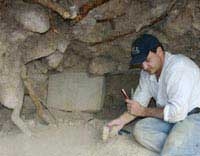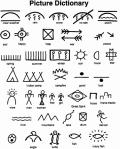Scientists Unearth Remains of a Man from the 15th Century with a Non-Movable Prosthetic Hand Featuring Four Fingers
The Bavarian State Office for the Preservation of Historical Monuments announced the discovery of a medieval skeleton with an iron prosthetic hand during excavations near St. George’s Church in Freising, Bavaria, Germany, as reported by Ancient Origins on October 29. This new finding provides clear evidence of ancient prosthetic technology and medical practices.

Scan of the prosthetic hand with four metal fingers. (Photo: Bavarian State Office for the Preservation of Historical Monuments).
Carbon dating results indicate that this man was between 30 and 50 years old, living around the years 1450 to 1620. During this period in Europe, prosthetic technology experienced significant advancements, partly due to the need to assist soldiers returning from conflicts with injuries.
Dr. Walter Irlinger from the Bavarian State Office for the Preservation of Historical Monuments remarked that the newly discovered prosthetic is particularly remarkable. “The hollow left hand has four fingers: the index, middle, ring, and little fingers are crafted individually from metal plates and are non-movable. The fingers are parallel to each other and slightly bent,” Irlinger noted. Additionally, this prosthetic was secured with straps.
Inside the iron prosthetic, researchers found a fabric resembling medical gauze, which likely served as padding for the amputated hand. The thumb bone was located inside the prosthetic, indicating that the patient retained this digit following the amputation.
This remarkable discovery is not unique, however. To date, experts have identified around 50 prosthetic devices from the late medieval and early modern periods in Central Europe, ranging from basic non-movable versions to complex models with mechanical components.
One notable discovery occurred in 2018 when archaeologists unearthed the remains of a medieval warrior with a healed amputated arm at the Longobard cemetery in Verona. Nearby, they found a belt buckle and a knife, suggesting that this warrior may have used the knife to create a prosthetic hand.
The finding in Freising provides valuable insights into the use and development of prosthetic limbs in the 15th century. The craftsmanship and precision of the iron hand in Freising reflect the medical advancements and adaptability of that era.





















































